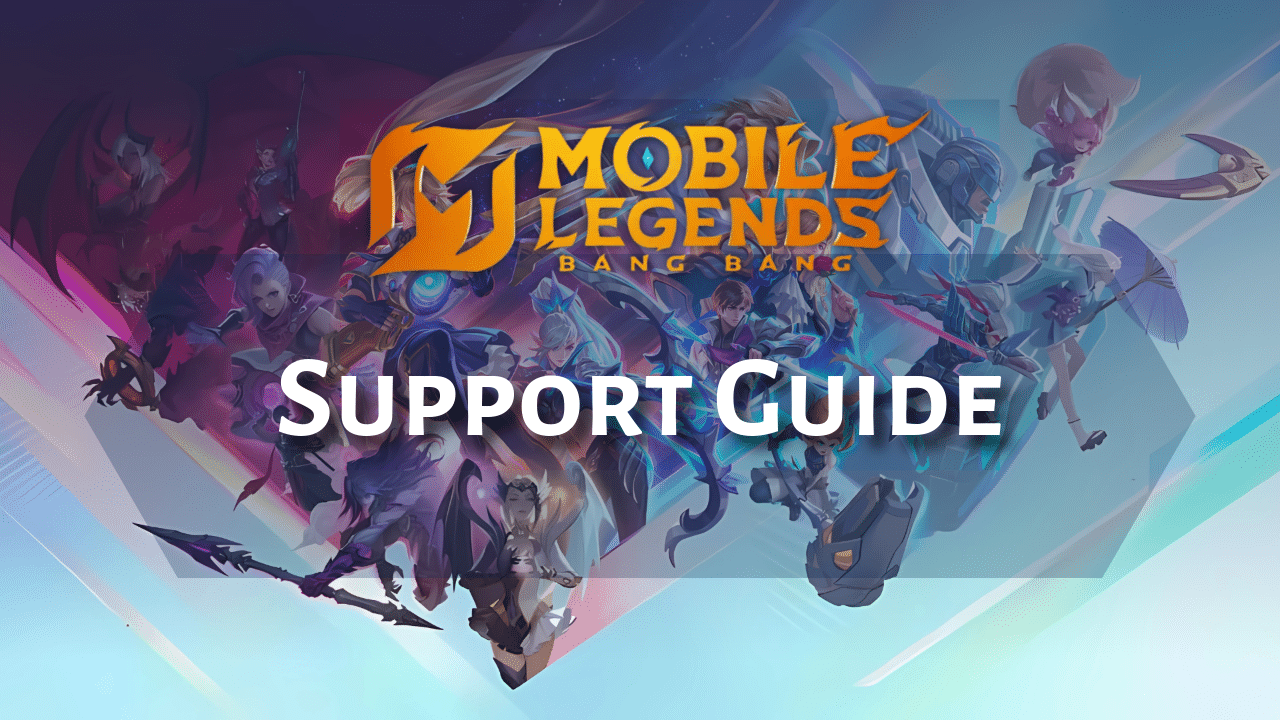
Mobile Legends Support: Introduction
The support role in Mobile Legends is the backbone of a well-coordinated team, ensuring that damage dealers and frontline heroes can operate at their best. While flashy plays and high kill counts may not define this role, a skilled support player can single-handedly turn the tide of battle with well-timed crowd control, lifesaving heals, and intelligent map awareness. The Mobile Legends Support Guide aims to highlight the impact of this role, showing how a well-played support can dictate the flow of a match without ever needing to top the scoreboard.
Support heroes come in different forms, from dedicated utility-based picks like Rafaela and Estes to more hybrid options such as Lolita, Kaja, and Minotaur, who can tank damage while still protecting their allies. Even some mages with strong crowd control can function as supports, adding another layer of versatility to the role. With the right Roam item and strategy, almost any hero with team-focused abilities can contribute to the game as a support, making adaptability a key skill.
A strong support player doesn’t just react to fights—they anticipate them, setting up vision, securing objectives, and ensuring their teammates can engage or disengage effectively. The Mobile Legends Support Guide will cover everything from early-game positioning to late-game decision-making, helping players master the nuances of a role that may not always receive the spotlight but is absolutely essential for victory.
Mobile Legends Support: Understanding Support Mechanics
A great support player isn’t just a healer or a shield dispenser—they are the backbone of the team’s strategy, ensuring allies stay alive and enemies are kept at bay. The Mobile Legends Support Guide highlights the mechanics that define this role, from positioning and vision control to skill timing and peeling for carries. Understanding these fundamentals will help you transform from a passive bystander into an active playmaker who dictates the flow of battle.
Positioning is everything for a support. Stay close to your damage dealers but avoid standing directly in the line of fire. Good positioning allows you to maximize healing, shields, and crowd control without getting burst down immediately. Map awareness is just as crucial, as a support should always have an eye on enemy movements to anticipate ganks or secure objectives. Providing vision through skills or items ensures that your team has better control over the battlefield, reducing the risk of ambushes and increasing overall team coordination.
The timing of your skills can make or break a fight. Properly using crowd control abilities to lock down threats or peeling for your carries can be the difference between victory and defeat. Supports also bring buffs and debuffs to the table, boosting allies with shields, speed buffs, or purifies while crippling enemies with slows or defense reductions. In the late game, some support heroes even take on the role of initiators, starting fights with well-placed stuns or displacements. The Mobile Legends Support Guide will delve deeper into these mechanics, helping you master the tools needed to elevate your gameplay and become a true asset to your team.
Mobile Legends Support: Choosing the Right Support
Picking the right support hero can make all the difference between a well-coordinated team and a chaotic mess. The Mobile Legends Support Guide emphasizes that your choice should complement your team’s needs and counter the enemy’s strategy. If your team lacks sustain, a healing support like Estes or Rafaela can keep your allies in the fight. If the enemy relies on heavy crowd control, Diggie’s Time Journey can nullify their efforts. Understanding both team and enemy compositions is key to making a smart pick.
The meta also plays a role in hero selection. Some supports perform better in certain patches due to balance changes, item adjustments, and evolving strategies. Staying updated on the best-performing heroes can give you an edge. However, choosing a support hero isn’t just about stats and strategy. Your playstyle matters. If you prefer a more aggressive approach, heroes like Kaja or Carmilla can provide both damage and utility. If you enjoy a more defensive style, Lolita or Minotaur can absorb damage while protecting your team.
Support heroes come in different varieties, each bringing unique strengths. Healing supports focus on sustain, tanky supports provide durability, utility-based supports disrupt enemy formations, and hybrid mage or fighter supports balance damage and crowd control. The Mobile Legends Support Guide encourages flexibility in your choices, ensuring that you adapt based on the game’s needs. No single support hero is the best for every situation, so learning multiple heroes will help you stay effective in any match.
Mobile Legends Support: Early Game Strategy
The early game sets the foundation for your team’s success, and as a Support, your job is to enable your allies while disrupting the enemy’s momentum. The Mobile Legends Support Guide highlights that your priority is to protect your marksman in the gold lane, assist the jungler when needed, and ensure your team gets an early advantage. Avoid taking last hits on minions, as your carry needs the gold more than you do. Instead, focus on zoning out enemies with your abilities, keeping your marksman safe, and preventing aggressive plays from the opposing team.
Vision and positioning are crucial in the early game. Checking bushes with your skills rather than face-checking can prevent surprise attacks that could put you and your carry at risk. The Mobile Legends Support Guide also emphasizes map awareness, as early ganks can make or break the game. If the enemy jungler is missing, warn your team and be ready to assist when needed. Helping secure the first Turtle is also a key responsibility, as winning this objective provides an early boost in gold and experience.
Your role isn’t just about healing or shielding allies but also about influencing engagements. If your team initiates a fight, rotate quickly to assist and turn the tide in their favor. Poking the enemy, preventing your teammates from being killed, and creating space for your carry are all vital to gaining control of the match. A strong early game sets up a smoother mid to late game, making your presence as a Support invaluable in every phase of the battle.
Mobile Legends Support: Mid Game Strategy
The mid game is where the tempo of the match starts to shift, and as a Support, your job is to ensure your team maintains its advantage. By this point, rotations become more frequent, and team fights start breaking out across the map. The Mobile Legends Support Guide emphasizes sticking with key allies, especially the marksman or jungler, to provide healing, shields, and crowd control. Roaming smartly and being present at fights can mean the difference between a won or lost skirmish. Vision control is also essential, as missing enemies likely indicate an incoming gank.
Team fights become more coordinated in the mid game, and this is where your initiation and utility shine. If your team is ahead, use your skills aggressively to engage enemies and set up picks. If your team is behind, focus on peeling for your carries and disrupting enemy formations. The Mobile Legends Support Guide highlights that healing and shields should be timed strategically rather than spammed, ensuring allies survive critical engagements. Objective control is also a priority—securing the Turtle or towers provides a gold and map control advantage that can snowball into the late game.
Awareness is key to thriving in this phase. Keeping an eye on enemy movements, knowing when to rotate, and predicting fights will make you a more impactful Support. Whether you’re playing a tanky initiator or a backline protector, your presence in fights ensures that your team has the sustain and control needed to dominate the match.
Mobile Legends Support: Late Game Strategy
The late game is where a single mistake can cost your team everything. At this stage, team fights are high-stakes, and securing objectives like the Lord or inhibitor turrets can determine the match’s outcome. The Mobile Legends Support Guide emphasizes that your primary duty is to stick with your core damage dealers, keeping them alive while denying the enemy team the same advantage. Checking bushes with skills instead of face-checking can prevent ambushes that might turn the game in the enemy’s favor.
Positioning is everything in late-game fights. Whether you’re a healer, a shield provider, or a crowd control specialist, knowing when and where to use your abilities can be the difference between victory and a total wipeout. Engaging the enemy should only be done when your team has an advantage, and your priority should be locking down high-damage threats like the enemy marksman or assassin. The Mobile Legends Support Guide highlights the importance of peeling for your carries—keeping them alive ensures that your team maintains its damage output. If your marksman is taken out, you may need to shift your focus to protecting another key ally, such as a fed jungler or mage.
Discipline wins late-game fights. Avoid unnecessary deaths, communicate with your team, and always be present for major objectives. Even if you aren’t dealing the most damage, your role as a Support can decide the match by dictating team fight flow, enabling your carries, and disrupting the enemy’s game plan.
Mobile Legends Support: Battle Spells for Support
Choosing the right battle spell can make a huge difference in how effective you are in a match. The Mobile Legends Support Guide recommends selecting a spell that complements your hero’s abilities while countering enemy threats. Flameshot is a versatile choice, offering knockback that can disrupt enemy divers while dealing decent damage. It’s especially useful for squishy Supports who need a way to push back aggressive assassins or fighters. Revitalize is another strong option for healers, as it provides an area-of-effect healing boost that can turn the tide of extended fights.
If mobility is a concern, Sprint can help reposition in fights or escape dangerous situations. Aegis is ideal for absorbing burst damage, which can be life-saving when protecting key allies like the marksman. Against teams packed with stuns, slows, or suppression effects, Purify ensures you can escape control effects and continue supporting your team. The Mobile Legends Support Guide emphasizes that no single spell is the best in every scenario—your choice should depend on your hero, the enemy’s composition, and your team’s strategy.
Mobile Legends Support: Emblems for Support
Emblems play a crucial role in enhancing a Support hero’s effectiveness, and the Mobile Legends Support Guide emphasizes choosing the right one based on your playstyle. The Support Emblem is often the best choice, as it provides Hybrid Regeneration and increased Movement Speed—both essential for roaming and sustaining in fights. Talents like “Pull Yourself Together” reduce respawn and battle spell cooldowns, making it particularly strong for Supports who rely on quick re-engagements.
Mage Emblem is a solid alternative for magic-based Supports, offering increased Magic Power and cooldown reduction. Some players even prefer it for traditional Supports who benefit from extra damage. The Tank Emblem works well for Fighter Supports or those who need extra durability, though it can also be a backup option if your Support Emblem isn’t fully upgraded. While Magic or Physical Emblems aren’t ideal, they are better than running without an emblem. The Mobile Legends Support Guide highlights that maximizing your emblem upgrades gives you a significant advantage in matches, so investing in the right one is always a smart move.
Mobile Legends Support: Common Mistakes and How to Avoid Them
Playing Support might seem straightforward, but small mistakes can quickly turn a match against your team. One of the biggest errors is going solo. Supports rely on their team for protection, and wandering off alone often leads to unnecessary deaths. The Mobile Legends Support Guide stresses the importance of always sticking with allies, especially damage dealers who need your presence to survive fights. Another critical mistake is taking last hits on minions or kills from your carries. Your job is to assist, not to secure eliminations—gold should be funneled to the heroes who scale best with it.
Poor positioning is another common issue. Standing too far forward makes you an easy target, while staying too far back limits your ability to support teammates. The best position depends on your hero and the situation, but generally, you should stay near your carries while keeping an eye on enemy threats. Ineffective skill timing is just as problematic. Using crowd control abilities too early or missing healing opportunities can turn the tide of battle against your team. The Mobile Legends Support Guide highlights that learning when to use skills is just as important as knowing what they do.
Map awareness separates good Supports from great ones. Not checking the minimap means missing gank warnings, failing to rotate in time, or losing objectives. Adaptability is also key—sticking to the same build every match ignores the strengths and weaknesses of the enemy team. Adjust your items based on what your team needs, whether it’s more healing, durability, or crowd control resistance. Finally, failing to protect carries or engaging at the wrong time are mistakes that often lead to disaster. Supports need to peel for their marksman and mages while ensuring fights are started under favorable conditions. Avoid these pitfalls, and you’ll quickly become a more reliable and valuable teammate.
Mobile Legends Support: Conclusion
Mastering the Support role is about more than just staying behind your teammates and casting abilities. A great Support player understands when to engage, when to retreat, and how to maximize their team’s potential. The Mobile Legends Support Guide emphasizes that every decision you make—from warding bushes to peeling for your carries—can influence the outcome of a match. Success isn’t measured by kills but by how well you enable your team to secure objectives and survive fights.
Adapting to each game is key. No two matches will be the same, so adjusting your build, positioning, and strategy based on the enemy lineup and your allies’ needs will set you apart. Communication is just as important as mechanics. Keeping your team informed about enemy positions, cooldowns, and possible ganks can prevent unnecessary deaths and secure victories. The Mobile Legends Support Guide makes it clear that the best Supports are those who remain proactive, aware, and always ready to turn the tide of battle in their team’s favor.
At the end of the day, playing Support is about making your team shine. Whether you’re keeping your marksman alive, initiating the perfect team fight, or disrupting enemy strategies, your presence on the battlefield matters. With the right mindset, awareness, and adaptability, you won’t just be a good Support—you’ll be the backbone of every victory.













